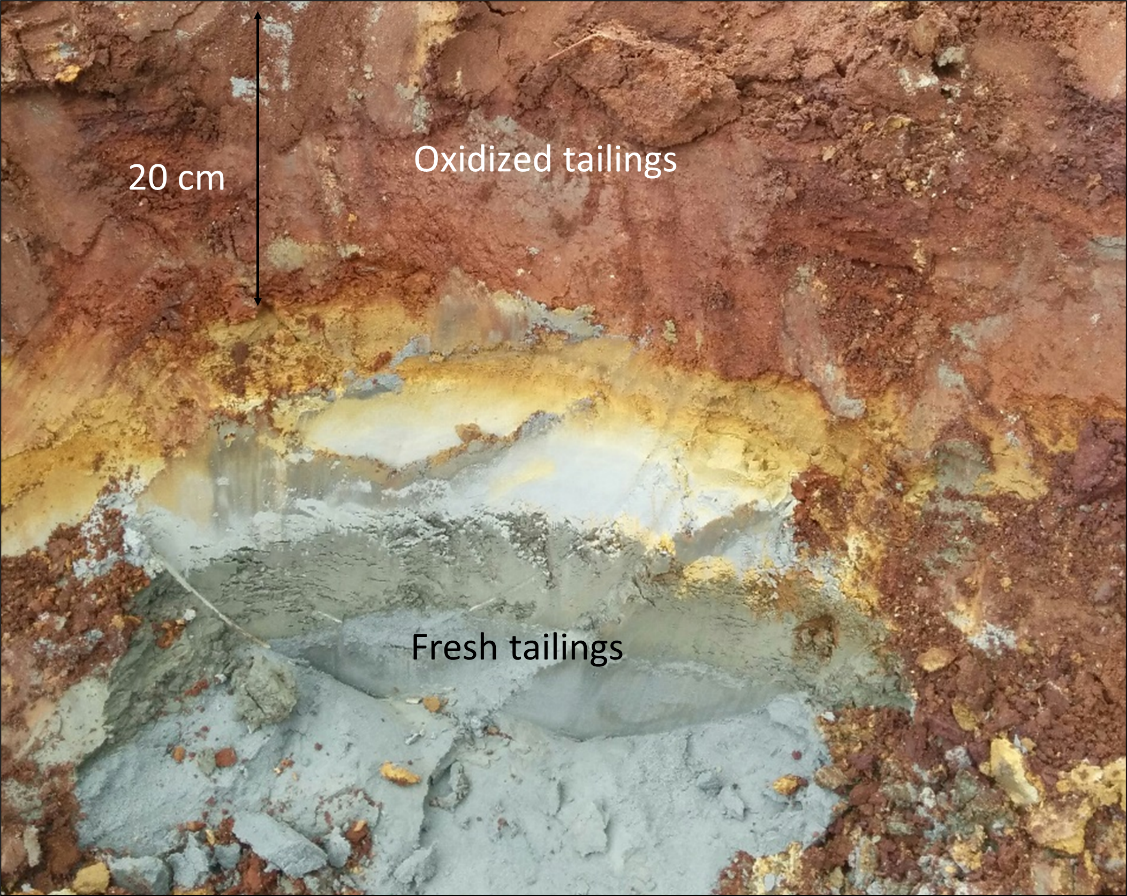Greater environmental protection for mine tailings
An international team of scientists used the Canadian Light Source (CLS) at the University of Saskatchewan to identify destructive metals in mine tailings samples taken in Quebec.
By Greg BaskyScanning electron microscopy image of secondary Fe-oxide formed within oxidized tailings.
When mine tailings are left exposed to the elements, they undergo changes in their chemical and mineral properties. Over time, oxygen and water cause the tailings to oxidize and release acid. This weathering can lead to the formation of new minerals within the waste that trap several metals harmful to the environment, including arsenic, copper, zinc, iron, and sulphur.
Since this oxidation happens over many decades, it is difficult to predict at the time of a mine shutdown its acid-generating potential and the volume of secondary minerals that will eventually form. To explore this problem, a team of researchers from Canada, Morocco and Belgium examined tailings samples collected from the Joutel gold mine in northern Quebec, which has been closed since 1994.

Using the SGM beamline at the CLS and other technologies, the team analyzed weathered samples taken just below the surface of the tailings and fresh samples from beneath the water table.
The team discovered the two samples were markedly different in their chemical and mineral makeup -- and in terms of the threat they pose to the environment. The shallower, weathered sample was acid-generating and groundwater within it contained metals in harmful amounts. However, the deeper sample, which was protected by a hardpan layer and thus not exposed to air or water, was neutral and therefore posed little environmental risk.
These findings, which were recently published, disprove results of research done in the early 2000s, which concluded -- based on lab testing only -- that tailings left at the site were largely neutral and thus posed little threat to the surrounding environment. Dr. Abdellatif Elghali conducted the study while he was a doctoral student at RIME UQAT-Polytechnique in Montreal.
Elghali said the changes in the properties of the tailings illustrate that it can take many years for the environmental threat posed by mine tailings to become apparent. “This makes existing prediction tests widely used in the mining industry limited in their ability to accurately gauge long-term environmental impacts,” he stated.
Co-author Mostafa Benzaazoua with the Université du Québec en Abitibi-Temiscamingue (UQAT) said using synchrotron techniques at the CLS deepened their understanding of the role of secondary minerals that developed in the mine tailings over time.
“This story is beautiful because we had conclusions and interpretations from 20 years ago, and our new conclusions challenge them by bringing new insights,” said Benzaazoua. “This mine site, we know it very deeply now because we had access to high level facilities and research tools. We understand even the complex speciation and fate of the elements. So, we understand the field behaviour of this mine site and the micro-scale behaviour of its tailings.”
The team hopes their findings will lead to greater environmental protection from mine tailings in the future.
Elghali, Abdellatif, Mostafa Benzaazoua, Hassan Bouzahzah, Mustapha Abdelmoula, James J. Dynes, and Heather E. Jamieson. "Role of secondary minerals in the acid generating potential of weathered mine tailings: Crystal-chemistry characterization and closed mine site management involvement." Science of the Total Environment 784 (2021): 147105. https://doi.org/10.1016/j.scitotenv.2021.147105
To arrange an interview (in English, French or Arabic), contact:
Victoria Schramm
Communications Coordinator
Canadian Light Source
306-657-3516
victoria.schramm@lightsource.ca
